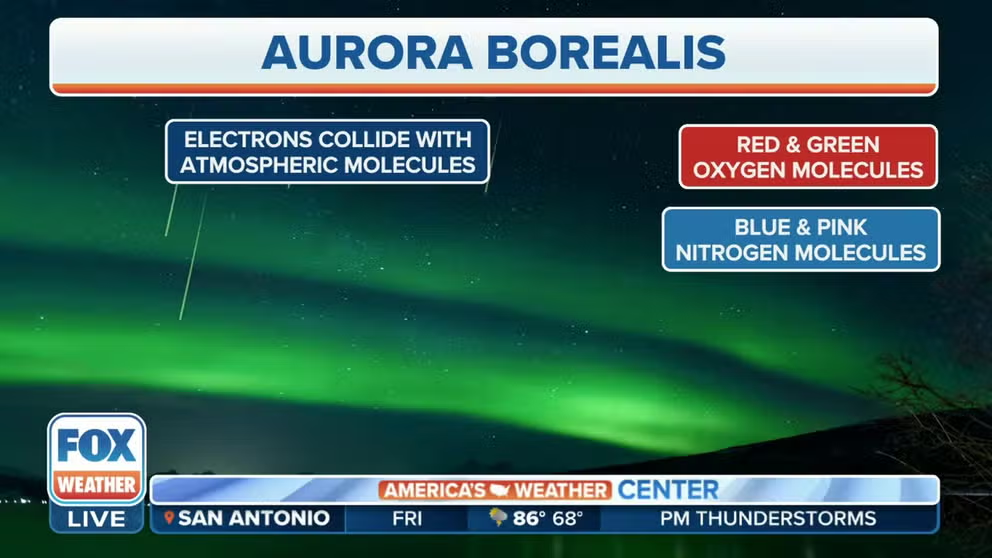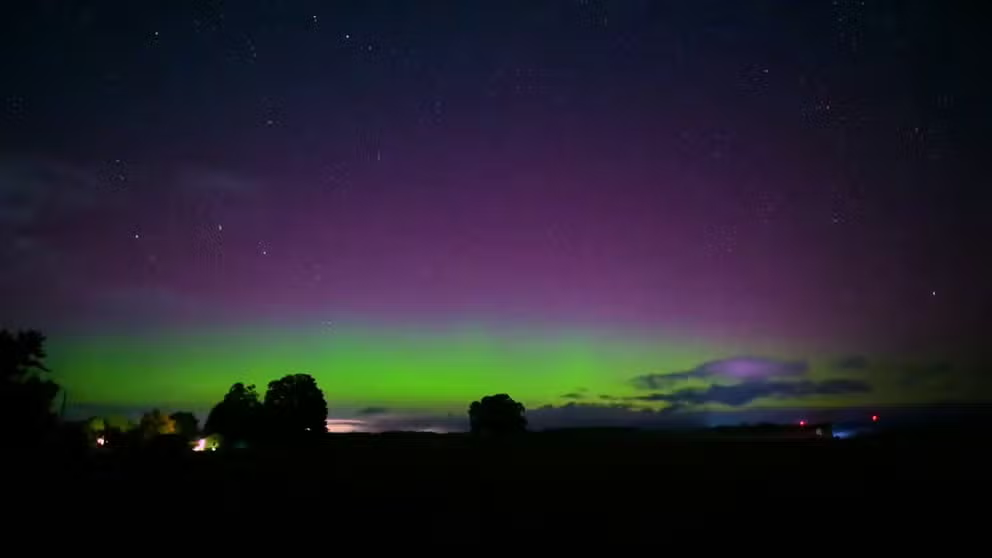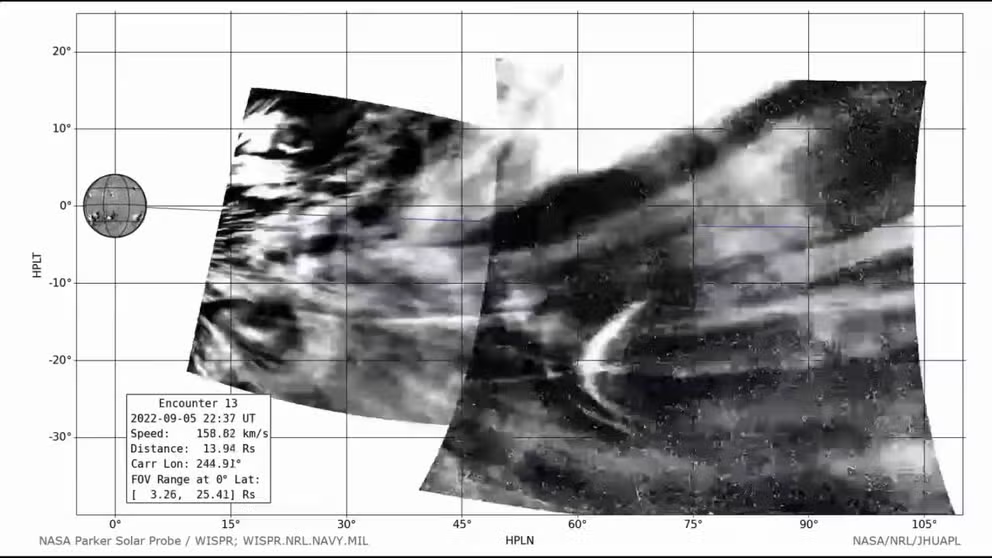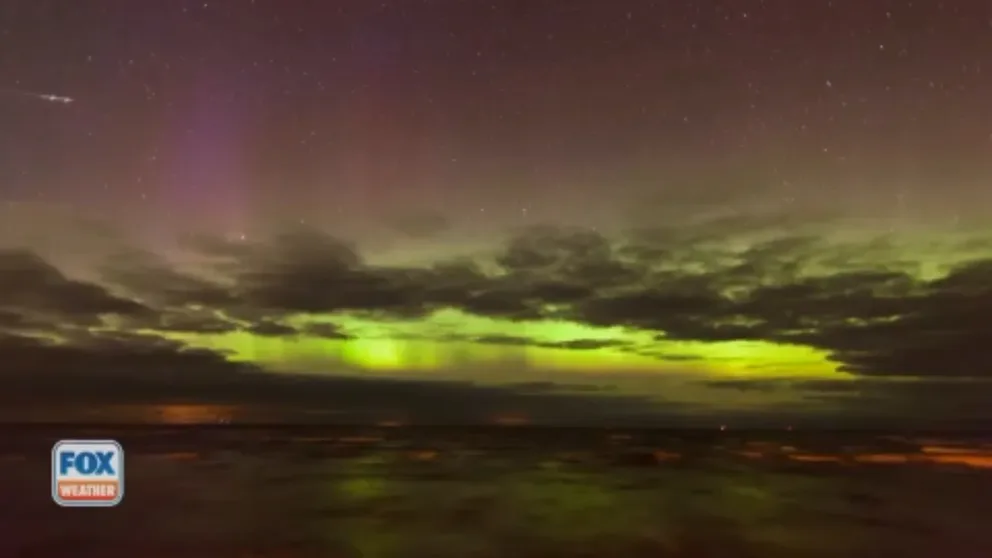Northern Lights activity to increase, include auroras farther south due to escalating Sun activity
This solar cycle is exceeding the activity forecast by the NOAA and NASA Solar Cycle 25 Prediction Panel. More sunspots mean more opportunities for people to witness the Northern Lights farther south than during less active times in the 11-year solar cycle.
Northern Lights on the rise, to become more likely in the next few years
Robert Steenburgh, Acting Operations Chief for NOAA’s Space Weather Prediction Center, discusses why Thursday's Northern Lights event wasn't as visible as the last one in April. He also explains why the Northern Lights could become more likely in the next few years.
Skygazers in the northern U.S. will want to stay tuned for more aurora light forecasts in the coming years as peak solar activity is expected in 2025 during the Solar Cycle 25.
Just last week, solar activity created dancing lights across the Northern Tier. Sights of the Northern Lights were reported in Michigan, Montana and Minnesota, illuminating the sky in shades of green, red and purple.
Northern Lights, normally found near the poles, are straying farther south due to increasing space weather. Ahead of the recent aurora lights seen in the U.S., NOAA's Space Weather Prediction Center (SWPC) in Boulder, Colorado, issued a Geomagnetic Storm Watch after a coronal mass ejection, or CME, from the Sun was observed with an Earth-directed component.
Watch: Northern Lights illuminate night sky above New York
A stunning time lapse video recorded in Altmar, New York, show bright greed, purple and pink colors from the Northern Lights on September 18, 2023.
The SWPC has been busy tracking solar activity as the Sun approaches solar maximum in its 11-year cycle. Currently, the Sun is approaching peak activity in Solar Cycle 25, which began in 2019. Just this week, another G2 (Moderate) Geomagnetic Storm Watch was issued by the SWPC for Monday when a CME arrived.
"This is pretty consistent with what you'd expect as we run up into the solar maximum," Space Scientist Robert Steenburgh, with NOAA's Space Weather Forecast Office, told FOX Weather. "We're heading towards the maximum in our 11-year solar cycle. And this is well within what we consider a normal activity for that kind of thing."
While increasing space weather isn't something most need to be concerned with, this solar cycle is exceeding the predicted "average" activity forecast by the Solar Cycle 25 Prediction Panel.
In 2020, the panel co-chaired by NOAA and NASA forecasted peak solar activity to happen in July 2025 with 115 sunspots. More than three years into Solar Cycle 25, activity is surpassing the original forecast. In August, 114 sunspots were recorded compared to the estimated range between 59 and 109, according to the Space Weather Prediction Center's Solar Cycle Progression data.
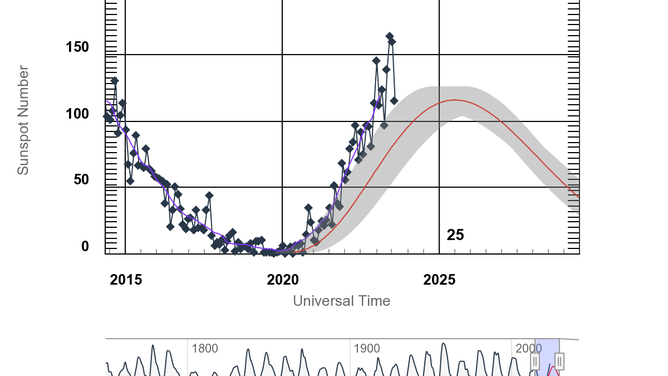
Solar cycle sunspot activity compared to forecast and average activity. The black line represents the monthly averaged data and the purple line represents a 13-month weighted, smoothed version of the monthly averaged data. (Credit: NOAA Space Weather Prediction Center)
(NOAA)
Increasing sunspots and CMEs also mean more opportunities for people to witness the Northern Lights farther south than during less active times in the solar cycle.
Steenburgh said the public should be prepared to see more news about the Sun's activity and Northern Lights as we approach solar maximum in the next two years.
THE DAY THE NORTHERN LIGHTS COVERED THE PLANET: HISTORY OF EARTH'S GREATEST SOLAR STORMS
"It's going to happen more frequently. Occasionally, mixed in with those (CMEs) will be, you know, larger ones that can push the aurora further south," Steenburgh said. "The key thing is it's not anything to be alarmed about. It's something the Sun's been doing for a long time, and it just gives us an opportunity to see some really neat stuff."
New tools to track increasing solar activity
NASA's Parker Solar Probe captures moment of coronal mass ejection
This video is from Sept. 5, 2022 and is a composite collected by the Wide Field Imager for NASA's Parker Solar Probe (WISPR) instrument onboard, which captured the eruption of a coronal mass ejection. The CME's explosion becomes visible starting around 14 seconds into the video. The Sun is depicted off to the left in the video. (Courtesy: NASA / Johns Hopkins APL)
The SWPC will have new forecasting tools next year ahead of expected peak Sun activity.
NOAA is slated to launch the Space Weather Follow-On L-1 observatory (SWFO-L1) spacecraft next year. The satellite will orbit the Sun 1 million miles from Earth at LaGrange Point 1, also known as L1.
46 YEARS OF GOES: HOW A HISTORY OF ACHIEVEMENTS HAS CHANGED WEATHER FORECASTING
The small satellite will sample solar wind and take images of CMEs, providing improved space weather forecasting of geomagnetic storms and, in turn, aurora lights. One such instrument on SWFO-L1, a compact coronagraph, will detect CMEs. The coronagraph will collect data on CMEs, including the size, mass, speed and direction, providing longer lead times to warn of extreme solar storms.
When the SWPC issues a Geomagnetic Storm Watch, it allows government agencies, power providers, telecommunication companies and satellite operators to prepare their systems impacted by space weather.
7 Facts about the Northern Lights
Seven facts about how the Northern Lights form and how best to spot them
Steenburgh said coronagraphs are key to forecasting space weather.
"That's our first real significant indicator that we've got a coronal mass ejection, and that coronagraph imagery allows us to parameterize that," he said.
A compact coronagraph instrument will also be on NOAA's next Geostationary Operational Environmental Satellite, GOES-U, also set to launch in 2024. The GOES-series satellites are already used to track solar activity, and GOES-U will carry three solar monitoring instruments.
